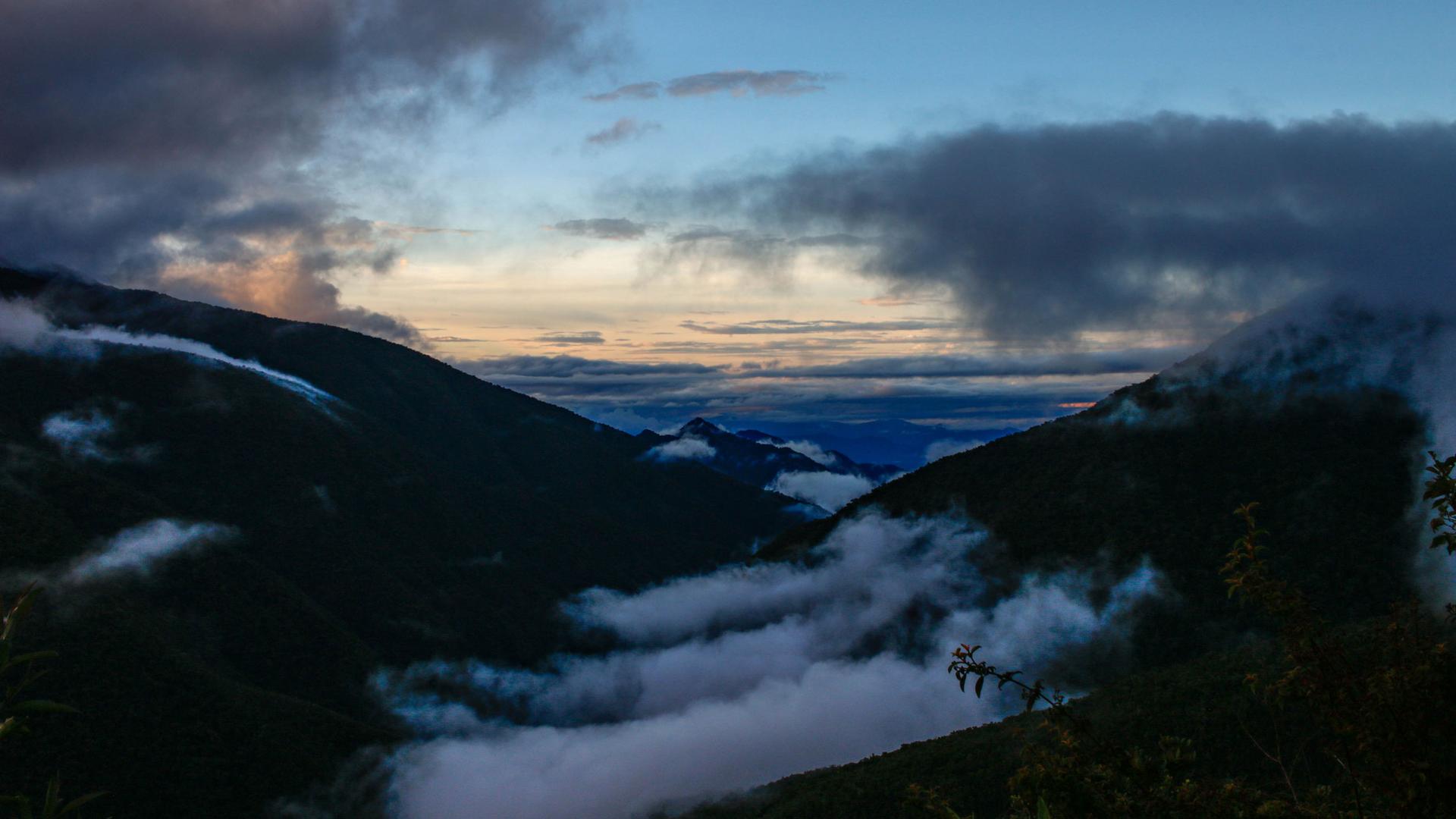These scientists created a ‘cloud curtain’ in Peru’s tropical forests to mimic the future
How do you make clouds suddenly disappear? Sunny days aside, what may seem like a question from a 1950s love song is actually one of science.
At Wayqecha Biological Station, a research site deep in the cloud forests of southern Peru, a giant “cloud curtain” hangs over the canopy to intercept clouds. Made of green mesh netting, it measures 98 by 131 feet and is meant to mimic reduced cloud cover under a warming climate.
Scientists believe that as climate change warms sea surface temperatures, moisture will form at higher elevations, moving the point where clouds and mountains intersect upslope. The future of cloud forests largely hinges on whether plants can migrate upslope fast enough, chasing clouds and cooler temperatures.
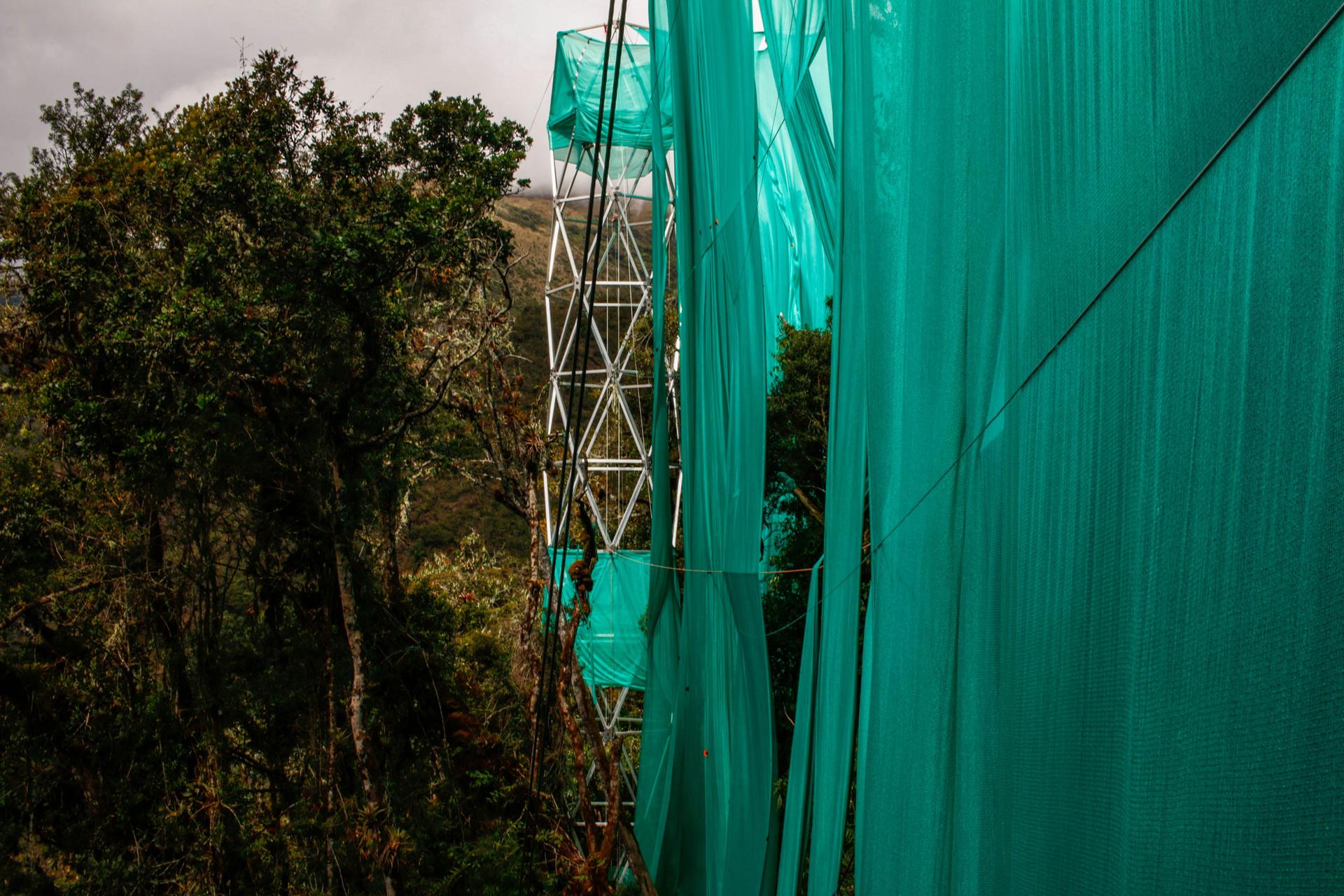
Dan Metcalfe, a researcher at Lund University, came up with the idea in the early 2010s when he heard local communities in South America were using mesh curtains to intercept clouds to obtain freshwater. He thought the same might be done for scientific purposes. By late 2017, after years of planning and construction, the curtain was complete.
Related: Puerto Rico’s tropical forests show resilience post-Maria
Now, clouds floating laterally through this plot of forest are diverted or intercepted, condensing into water and trickling down the outer netting. This leaves sunny skies behind. In the coming years, researchers will carry out experiments on nitrogen-fixing, carbon storage, plant ecophysiology, and hydrology.
“It takes just a few minutes of walking in these forests to understand that much of the vegetation here is quite strongly adapted to moist, wet conditions with lots of clouds.”
“It takes just a few minutes of walking in these forests to understand that much of the vegetation here is quite strongly adapted to moist, wet conditions with lots of clouds,” Metcalfe said.
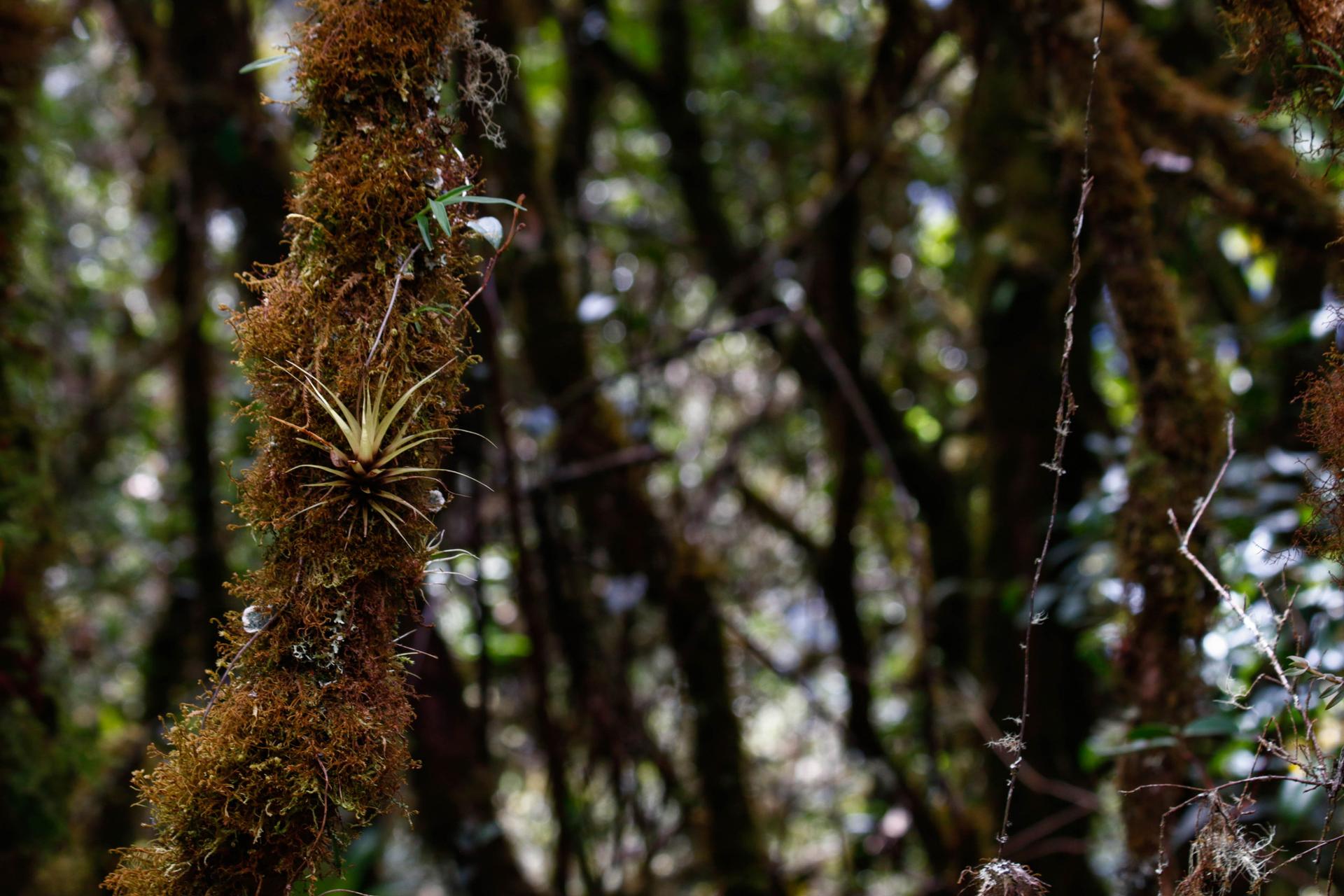
A diverse array of plants grow under the cloud curtain’s otherworldly turquoise shadow: bromeliads, weinmannia, ficus, hedyosmum, strangler figs, ocotea. All face a perilous future.
Cloud forests are exceedingly rare, making up just 2.5% of Earth’s tropical forests. They can be found at elevations between 1,600 and 13,000 feet above sea level in countries along the equator in South America, Africa, Southeast Asia and the Caribbean. They are created when warm, wet air rises up through the mountainside, rapidly cooling off and condensing into fluffy clouds that float through the canopy, serving as a key water source for plants.
Related: Rainforests are ‘worth more alive than dead’ according to science
Unsurprisingly, cloud forests are a biological hotspot, home to a multitude of endemic species. In Peru, more than one-third of the country’s 270 endemic birds, mammals and frogs can be found in its cloud forests — much more than in the Amazon lowland.
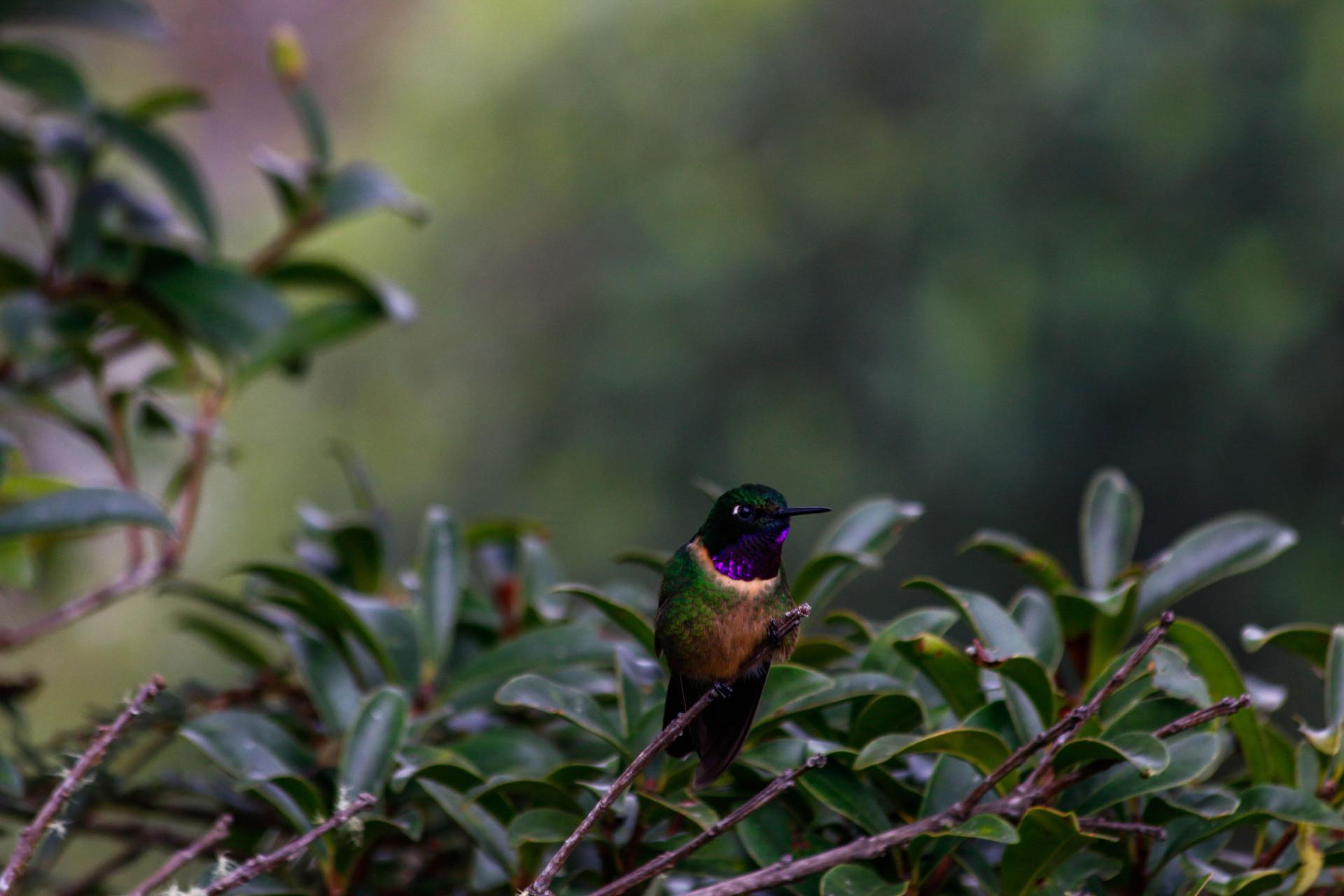
Already, dramatic changes have unfolded at the Monteverde cloud forest in Costa Rica. The extinct Monteverde golden toad has often been labeled the first victim of climate change. Scientists predict that in as few as 25 years, climate change could shrink and dry the Western hemisphere’s cloud forests by 60 to 80%.
Though the impacts of climate change on regions like the Arctic and Amazon have been well studied, relatively little research has been done on cloud forests. The cloud curtain experiment in Peru, funded by Swedish government agencies, is part of a growing global effort to change that.
On a July day in the dry season, Roxy Cruz pushes a wheelbarrow filled with scientific instruments down a muddy path that leads to the curtain.
“Cloud forests are often characterized by their large abundance of epiphytes — plants that spend their entire life in the canopy. But trees provide this really important scaffolding function for the epiphytes to intercept water from the clouds.”
Amethyst-throated sun angel hummingbirds flit between the trees. Today, she’s collecting cloud water. Cruz is a doctoral candidate at the University of California-Berkeley. For the past three years, she’s traveled to Wayqecha to study how trees will respond to climate change.
“Cloud forests are often characterized by their large abundance of epiphytes — plants that spend their entire life in the canopy. But trees provide this really important scaffolding function for the epiphytes to intercept water from the clouds,” Cruz said. Mosses, ferns, bromeliads, orchids, and shrubs living in the canopy will transport water down through the trees and beyond.
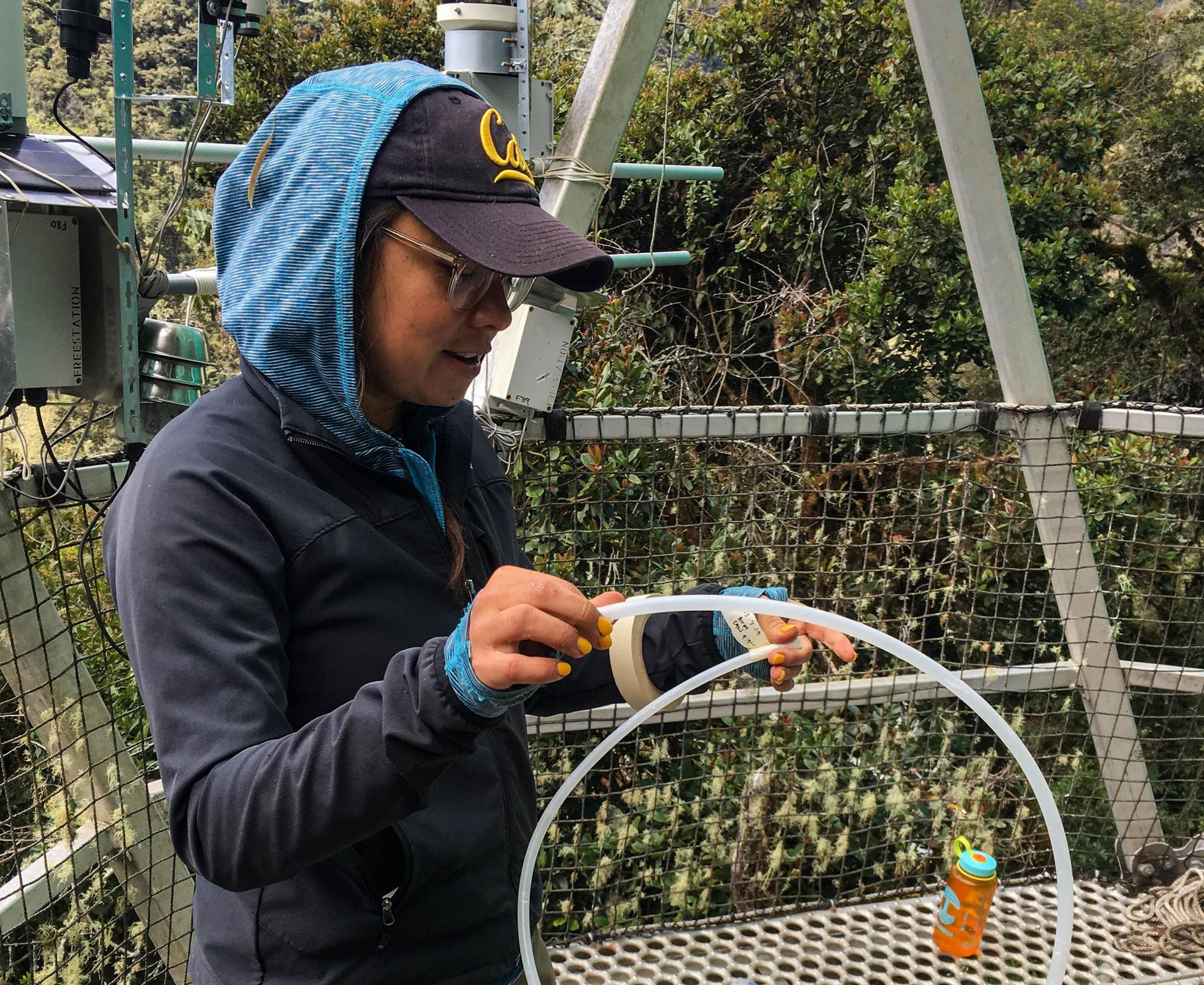
Cruz wants to know exactly what percentage of water found inside trees comes directly from cloud water inputs, as opposed to ground or rainwater. Each water source has a distinct isotopic signature that can be analyzed and identified in a lab.
“Without a doubt, our in situ results show that … cloud water is an important contribution to the plants in cloud forests,” she said. In the coming years, she hopes to return to the cloud forests every dry season to see how things change compared to her baseline data. “As cloud water inputs are reduced with this infrastructure, we can see the change in cloud water uptake.”
The cloud forests of Wayqecha are located along the southern edge of Peru’s Manu National Park. Intercepted cloud water fills the valley’s streams, flowing down through the park and into the mighty Amazon River, ultimately ending up in the Atlantic Ocean.
Related: Tropical forests are becoming net carbon producers
Hundreds of communities along the way rely on that fresh drinking water. Beisit Luz Puma Vilca is a biologist from Cusco, Peru, who serves as the fieldwork and science coordinator for the Cloud Curtain project.
“We want to know what amount of water is getting into the soil because the cloud forests are an important reservoir for the lowlands.”
For the past few years, she has studied how plant growth is changing under the curtain. Trees, bryophytes, ferns, and some orchid species are growing slower, and trees are smaller in diameter under the curtain. But her next research step is to examine changes in streamflow. “We want to know what amount of water is getting into the soil because the cloud forests are an important reservoir for the lowlands,” she said.
“But the climate change we have now is an order of magnitude — about 30 times faster than things have changed in the past. It’s unclear whether things can keep up.”
The elevational gradient of flora in these forests is small, limiting species to a very narrow climatic range. “When we look at individual tree species, we can see them starting to shift themselves upslope,” said Miles Silman, a biologist at Wake Forest University. In the past, cloud forests have been able to keep up with warming temperatures. “But the climate change we have now is an order of magnitude — about 30 times faster than things have changed in the past. It’s unclear whether things can keep up,” he said.

Studies show that cloud forest temperatures will increase by around 9 degrees Fahrenheit over the next century. In turn, plants will need to migrate around 3,000 feet upslope to remain in equilibrium with temperatures by 2100.
But the forest’s migration is limited by high-altitude Andean grasslands. Humans have long burned the grassland for agricultural pastures and grazed cattle, creating a “hard limit” that is likely preventing cloud forests from penetrating the paramo — alpine tundra ecosystems. In a study of Manu National Park, Silman and colleagues found that the cloud forests had hardly moved into the grasslands, despite warming temperatures.
“…We need to move from the paradigm of questioning if climate change is going to affect cloud forests to how quickly can we act to prevent the forecasts from becoming reality. Because the forecasts are not good. The forecasts are dire for cloud forests.”
Deforestation further threatens the world’s cloud forests. “Land conservation is critical,” Cruz said. “The amount of cloud forests that have been clear-cut for farmland is tremendous. We need to move from the paradigm of questioning if climate change is going to affect cloud forests to how quickly can we act to prevent the forecasts from becoming reality. Because the forecasts are not good. The forecasts are dire for cloud forests.”
Silman underscores the untapped scientific potential of this rare environment. “We’re just now sketching out these ecosystems. We’re discovering species at a rate undiminished from the old days—new genera of trees and large mammals. But things are changing fast enough that they’re going to go extinct before we even know they’re there.”
